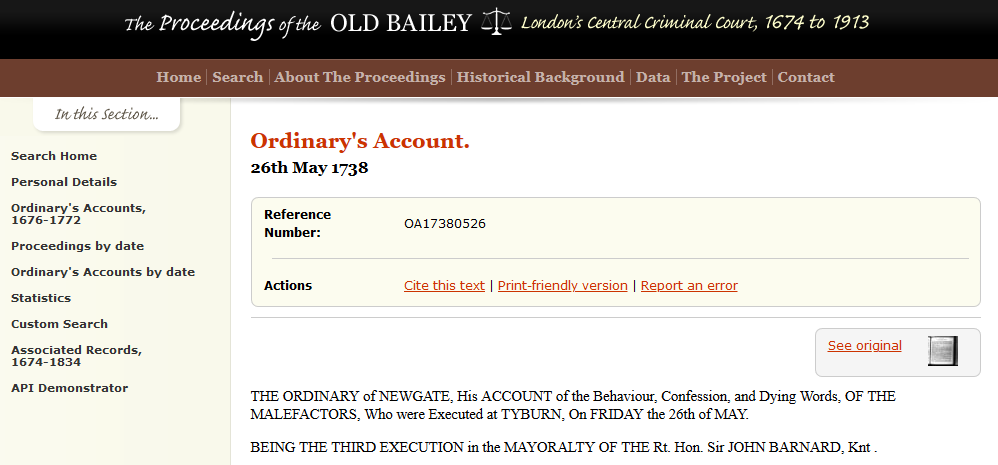
Published on 24 March 2020
The archives of Old Bailey proceedings are detailed in their coverage of offences to do with the Coin of the Realm, and infringements thereof.
In a previous blog we explored whether Stablecoin was an example of “coin clipping” because, although supposedly backed by fiat currency, gold, silver or whatever, it was not 100% coverage due to costs. The costs could be construed as the slivers of gold and silver coins that a clipper shaved off the coins and used for other purposes, making the coins debased.
“Coin clipping” was punishable by death, as it was deemed a form of treason.
Now we need to go on and examine whether issuance of Bitcoin would in those days have been considered as treason, or fraud or whatever. Bitcoin differs from Stablecoin in that there is no claim to the existence of any backing at all: it’s fresh air.
“Uttering” was the offence of creating and/or passing counterfeit currency, and we have a clear indication from the “Ordinary’s Accounts” – the reports by a chaplain on all those that suffered the death penalty – of how the creation of counterfeit currency was viewed.
The record OA17380526 of executions on 26th May 1738 includes those of Judith Murray (otherwise Judith the Wife of William Tinman), William Tinman, and Phillip Murray, of St. Leonard Shoreditch. None were employees of the Royal Mint in the Tower of London and yet, outrageously, they had the brass (or rather pewter) neck to go and “feloniously and traiterously…forge and coin… 22 Pieces of false, feigned and counterfeit Money, of Pewter, Tin, Lead, and other Metal, in the Likeness of Shillings”.
The parallel with Bitcoin is that its miners are not employed at the Royal Mint either, and they use materials of low value (PC, software, broadband connection etc.) to create what they call money.
The three defendants were convicted and sentenced to death, but Judith Murray got temporarily off the hook on the ability to “plead their belly”. She would then have been “examined by a jury of matrons (chosen from women present in the courtroom), and, if found to be “quick with child” (if movement could be detected, signalling the beginning of life), their punishment was respited until after the baby was born”. Judith, indeed, “having been found quick with Child by a Jury of Matrons, was repriev’d till such Time as she is brought to Bed”.
Her co-defendants were not so fortunate as, on 26th May 1738, they were taken from Newgate prison to the Tyburn and not on a cart: they suffered two of the four stages of punishment normal to a guilty verdict for treason: “Tinman and Murray were drawn on a Sledge for Coining”, and then hung, but not drawn or quartered.
So we have a pretty clear judgment on how the “issuance” aspect of the uttering of Bitcoin would have been viewed in the early 18th-century. That leaves us the matter of the “passing” aspect of the uttering of Bitcoin i.e. running an exchange for Bitcoin or indeed Stablecoin.
